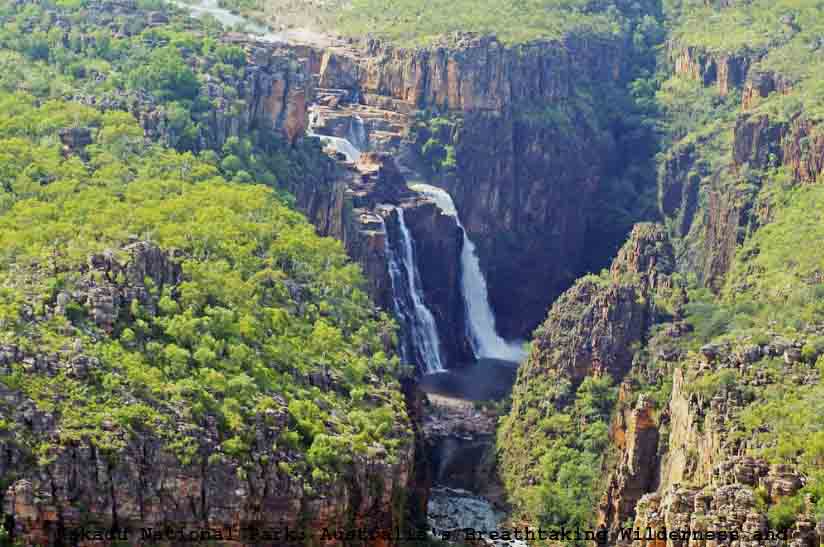
Kakadu National Park
Australia is a land of extraordinary natural wonders, and among its many treasures lies Kakadu National Park, a sprawling expanse of wilderness that boasts both breathtaking landscapes and rich indigenous cultural heritage.
Covering nearly 20,000 square kilometers in the Northern Territory, Kakadu is Australia’s largest national park and is recognized as a UNESCO World Heritage Site. In this article, we will delve into the diverse ecosystems, unique wildlife, ancient rock art, and the cultural significance that makes Kakadu a must-visit destination.
Geological and Ecological Marvels
Breathtaking Landscapes
Kakadu National Park is a showcase of Australia’s diverse geography, featuring landscapes that range from wetlands and floodplains to sandstone escarpments and savannah woodlands. The park is divided into several distinct regions, each offering a unique glimpse into the country’s geological history.
- Arnhem Land Plateau:
The rugged sandstone plateaus of Arnhem Land form the park’s eastern edge, providing a dramatic backdrop to the lush floodplains below. This region is characterized by deep gorges, cascading waterfalls, and panoramic views that captivate visitors with their sheer beauty.
- Alligator Rivers Region:
The Alligator Rivers Region, named after the East and South Alligator Rivers that wind through the landscape, is home to extensive wetlands, providing a haven for numerous bird species, reptiles, and aquatic life. This area is a testament to the delicate balance between water and land ecosystems.
- Kakadu Escarpment:
The park’s central feature is the stunning Kakadu Escarpment, a series of towering sandstone cliffs that stretch for hundreds of kilometers. This escarpment not only creates a visually striking panorama but also shelters a wealth of plant and animal life adapted to its unique conditions.
Rich Biodiversity
Kakadu is a haven for wildlife enthusiasts, boasting an incredible diversity of flora and fauna. The park is home to over 280 bird species, countless reptiles, mammals, and a variety of plant life adapted to the challenging Australian climate.
- Avian Wonderland:
Kakadu’s wetlands, including places like Yellow Water Billabong, are a bird watcher’s paradise. Colorful species such as magpie geese, jabirus, and whistling ducks thrive in these waterlogged habitats. Rare and endangered species, such as the Gouldian finch, also find refuge within the park.
- Crocodile Haven:
The waterways of Kakadu are inhabited by both freshwater and saltwater crocodiles, showcasing the coexistence of these ancient reptiles in the park. Visitors can witness the incredible sight of crocodiles sunning themselves on the riverbanks or silently gliding through the water.
- Mammalian Marvels:
The park is home to iconic Australian mammals, including wallabies, kangaroos, and possums. The elusive and endangered northern quoll, a carnivorous marsupial, also finds sanctuary in the diverse ecosystems of Kakadu.
Indigenous Culture and Rock Art
Ancient Connections
Kakadu National Park is not only a haven for nature enthusiasts but also a living testament to the rich cultural heritage of the Aboriginal people. The park has been continuously inhabited for more than 65,000 years, making it one of the longest historical records of human habitation on Earth.
- Aboriginal Presence:
The Bininj/Mungguy people are the traditional custodians of Kakadu, and their connection to the land is deeply embedded in their Dreamtime stories and cultural practices. Visitors have the opportunity to engage with and learn from the indigenous communities, gaining insights into their ancient traditions.
- Rock Art Galleries:
One of the most remarkable aspects of Kakadu is its extensive collection of Aboriginal rock art. Dating back thousands of years, these intricate paintings provide a window into the spiritual and cultural practices of the region’s indigenous people. Ubirr and Nourlangie Rock are renowned sites where visitors can witness these ancient expressions.
- Dreamtime Stories:
The rock art of Kakadu often depicts Dreamtime stories, which are the Aboriginal creation myths that explain the origins of the land, its features, and its inhabitants. These stories are a crucial part of understanding the cultural significance of Kakadu and its place in the broader Aboriginal cosmology.
Conservation Efforts and Challenges
Environmental Stewardship
While Kakadu National Park is a testament to Australia’s natural beauty and cultural history, it also faces numerous challenges, including those related to conservation and environmental sustainability.
- Threats to Biodiversity:
The park has seen an increase in invasive species, altered fire regimes, and changing water patterns, all of which pose threats to its unique ecosystems. Conservation efforts are underway to mitigate these challenges and preserve the delicate balance of Kakadu’s biodiversity.
- Indigenous-Led Conservation:
Recognizing the importance of traditional ecological knowledge, conservation initiatives in Kakadu often involve collaboration with indigenous communities. Indigenous-led programs aim to incorporate traditional practices into modern conservation strategies, ensuring the park’s sustainability while respecting the cultural heritage of its custodians.
- Tourism and Sustainability:
The popularity of Kakadu as a tourist destination brings both opportunities and challenges. Sustainable tourism practices are crucial to minimizing the impact on the environment and ensuring that future generations can continue to enjoy the park’s natural and cultural wonders.
Exploring Kakadu: Must-Visit Sites
Unmissable Destinations
Kakadu National Park offers a plethora of experiences for visitors, from thrilling wildlife encounters to awe-inspiring natural wonders. Here are some must-visit sites within the park:
- Ubirr:
Famous for its ancient rock art galleries, Ubirr also provides panoramic views of the surrounding landscapes. A climb to the top of the rock formations rewards visitors with breathtaking sunsets over the floodplains.
- Jim Jim Falls:
Nestled within the Arnhem Land Plateau, Jim Jim Falls is a spectacular seasonal waterfall surrounded by sheer cliffs. The journey to reach the falls involves a scenic drive and a hike, making it a rewarding adventure for nature lovers.
- Yellow Water Billabong:
Embark on a boat cruise through Yellow Water Billabong for a close encounter with Kakadu’s diverse wildlife. From crocodiles basking in the sun to an array of bird species, this wetland experience is a highlight of any visit.
- Nourlangie Rock:
Another significant rock art site, Nourlangie Rock, offers a glimpse into the artistic expressions of the Aboriginal people. The site also features a walking trail that provides insights into the cultural and natural history of the region.
Conclusion
Kakadu National Park stands as a testament to the intricate tapestry of Australia’s natural wonders and cultural heritage. From the mesmerizing landscapes that shift from wetlands to escarpments, to the ancient rock art that tells the stories of the land’s first inhabitants, Kakadu offers a profound and enriching experience for those fortunate enough to explore its depths.
As we marvel at the biodiversity, learn from the rich indigenous culture, and witness the ongoing efforts to preserve this ecological gem, it becomes clear that Kakadu is not just a national park; it is a living,
breathing testament to the interconnectedness of nature, culture, and conservation. In the face of challenges, both environmental and cultural, Kakadu serves as a reminder that the preservation of such treasures requires collective efforts and a deep respect for the delicate balance that sustains this remarkable landscape.









